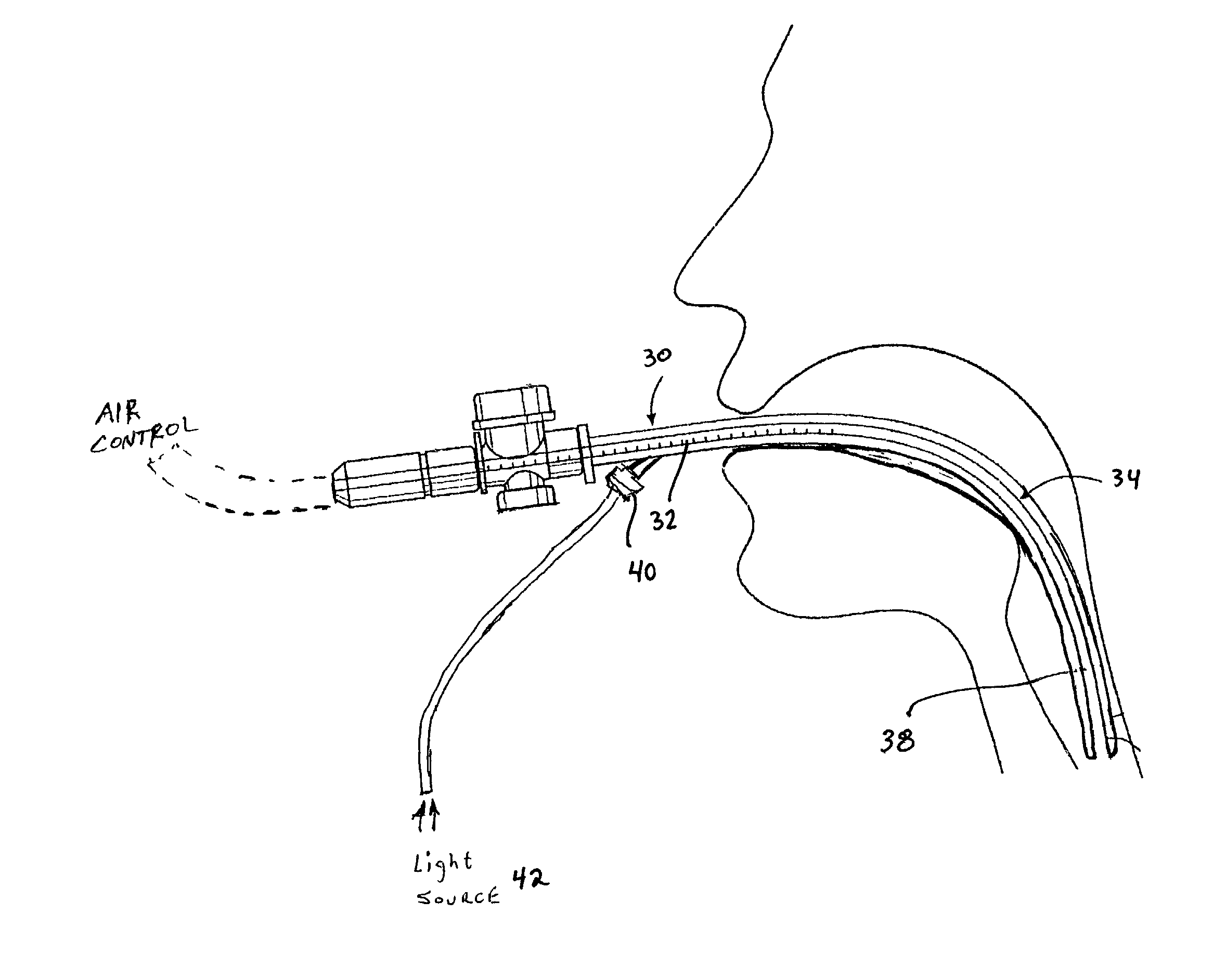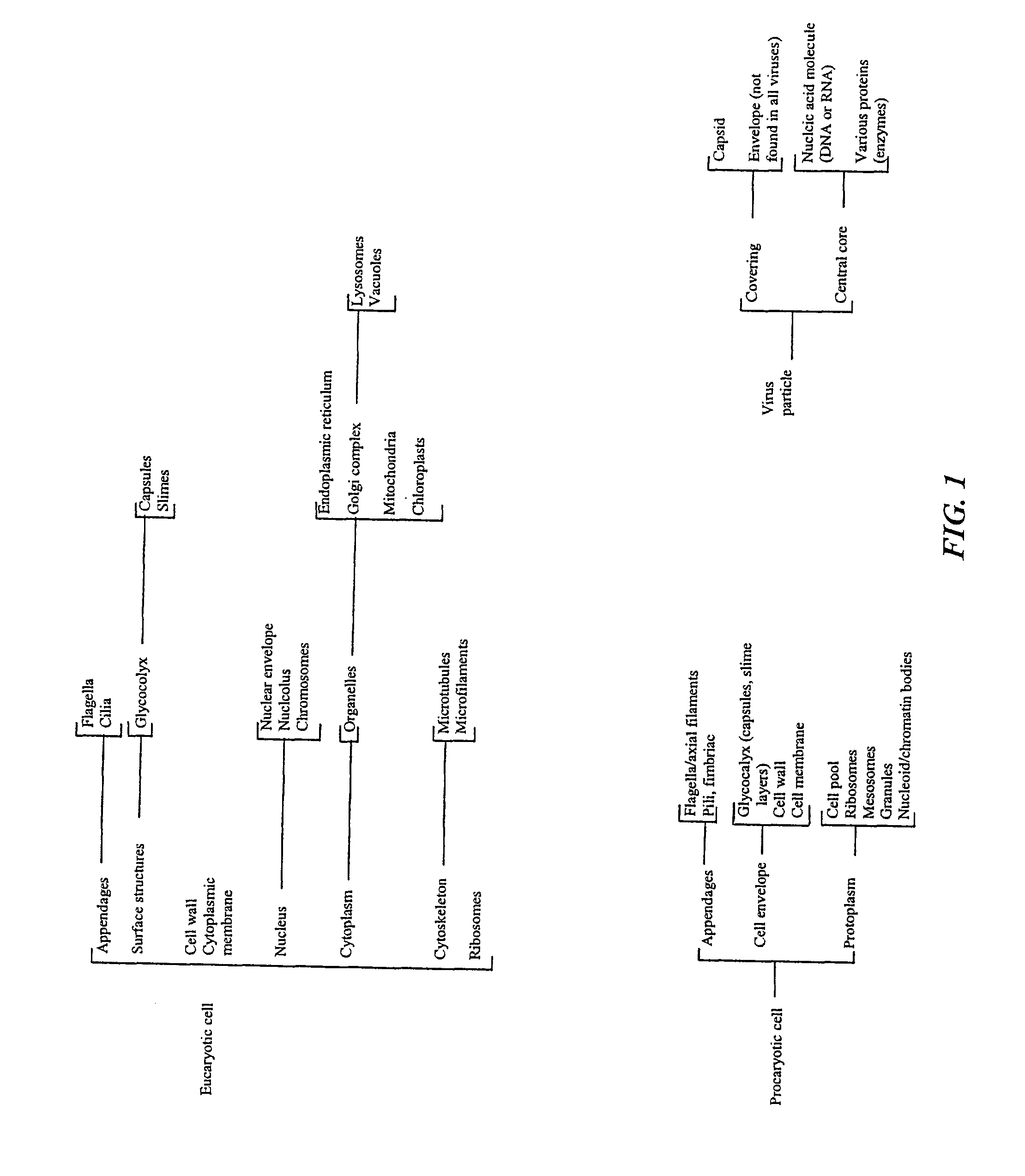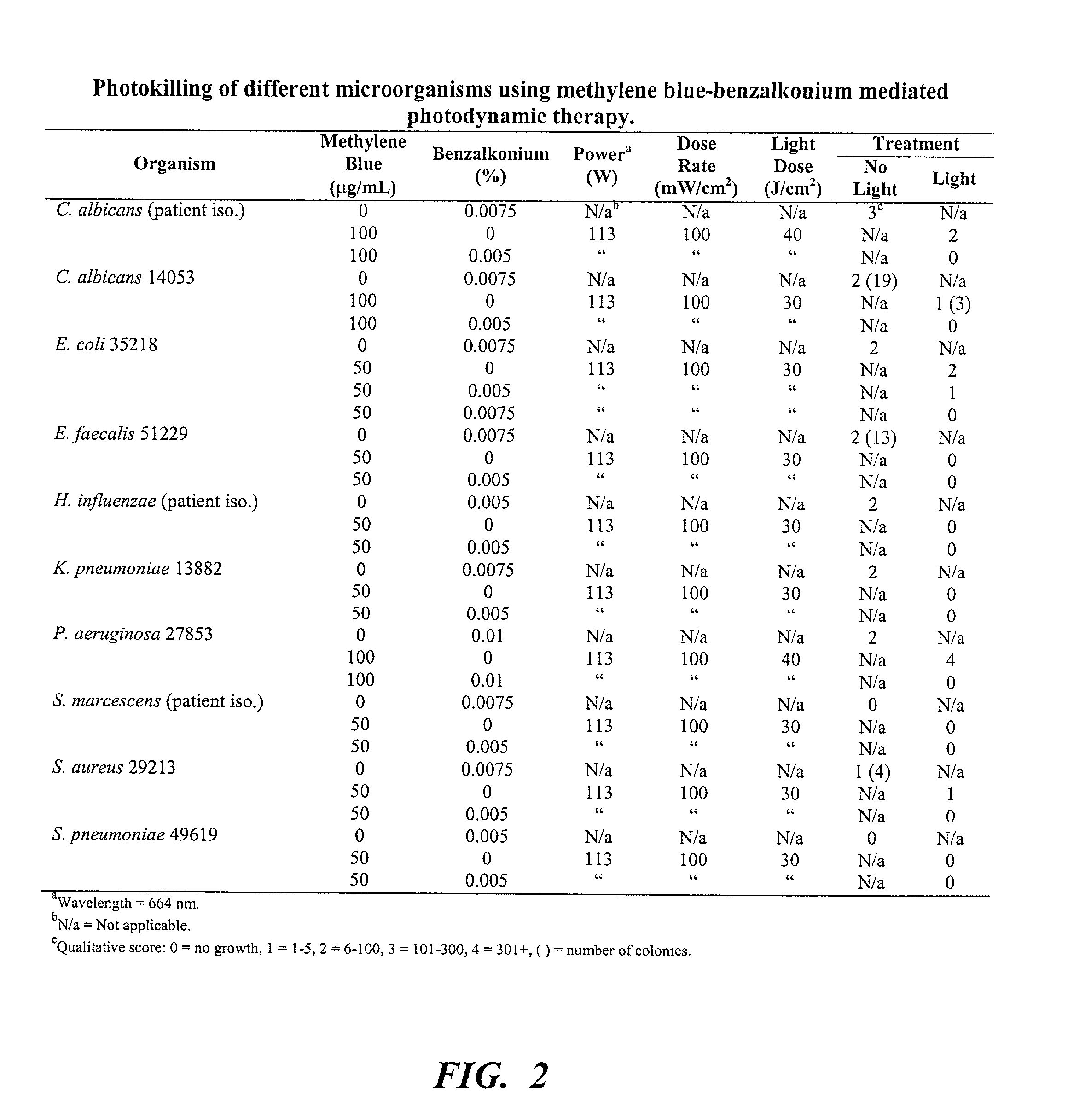Photodynamic cellular and acellular organism eradication utilizing a photosensitive material and benzalkonium chloride
a photosensitive material and photosensitive technology, applied in the field of photodynamic therapy or process, can solve the problems of gram-negative biofilms, increased infection rate, and serious challenges in achieving suitable formulations for administration to the body, and achieve the effect of enhancing enhancing the membrane permeability of acellular or cellular organisms, and increasing the kill rate of gram-negative bacteria
- Summary
- Abstract
- Description
- Claims
- Application Information
AI Technical Summary
Benefits of technology
Problems solved by technology
Method used
Image
Examples
Embodiment Construction
[0041]In accordance with the invention, a photodynamic therapy utilizes a photosensitive material, such as methylene blue, methylene green, or toluidene blue, in combination with a chemical agent, such as surface acting agent or ‘surfactant’, and a light emitting device, such as a light wand, light patch, light pad or shaped light-emitting or light-communicating article. As described in more detail herein, the photodynamic therapy may be achieved at a variety of cells sites, including but not limited to tissue fields and biofilms.
[0042]The photodynamic therapy according to the present invention may be utilized in the eradication of cellular organisms, such as tumor cells, cancer cells, virus-infected cells, bacteria, etc. The photodynamic therapy according to the present invention may also be utilized in the eradication of acellular organisms, defined broadly to include organisms not composed of cells, e.g., bodies of protoplasm made discrete by an enveloping membrane (also referred...
PUM
| Property | Measurement | Unit |
|---|---|---|
| light wavelength | aaaaa | aaaaa |
| time | aaaaa | aaaaa |
| wavelengths | aaaaa | aaaaa |
Abstract
Description
Claims
Application Information
 Login to View More
Login to View More - R&D
- Intellectual Property
- Life Sciences
- Materials
- Tech Scout
- Unparalleled Data Quality
- Higher Quality Content
- 60% Fewer Hallucinations
Browse by: Latest US Patents, China's latest patents, Technical Efficacy Thesaurus, Application Domain, Technology Topic, Popular Technical Reports.
© 2025 PatSnap. All rights reserved.Legal|Privacy policy|Modern Slavery Act Transparency Statement|Sitemap|About US| Contact US: help@patsnap.com



